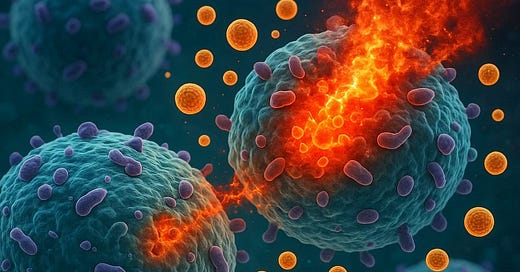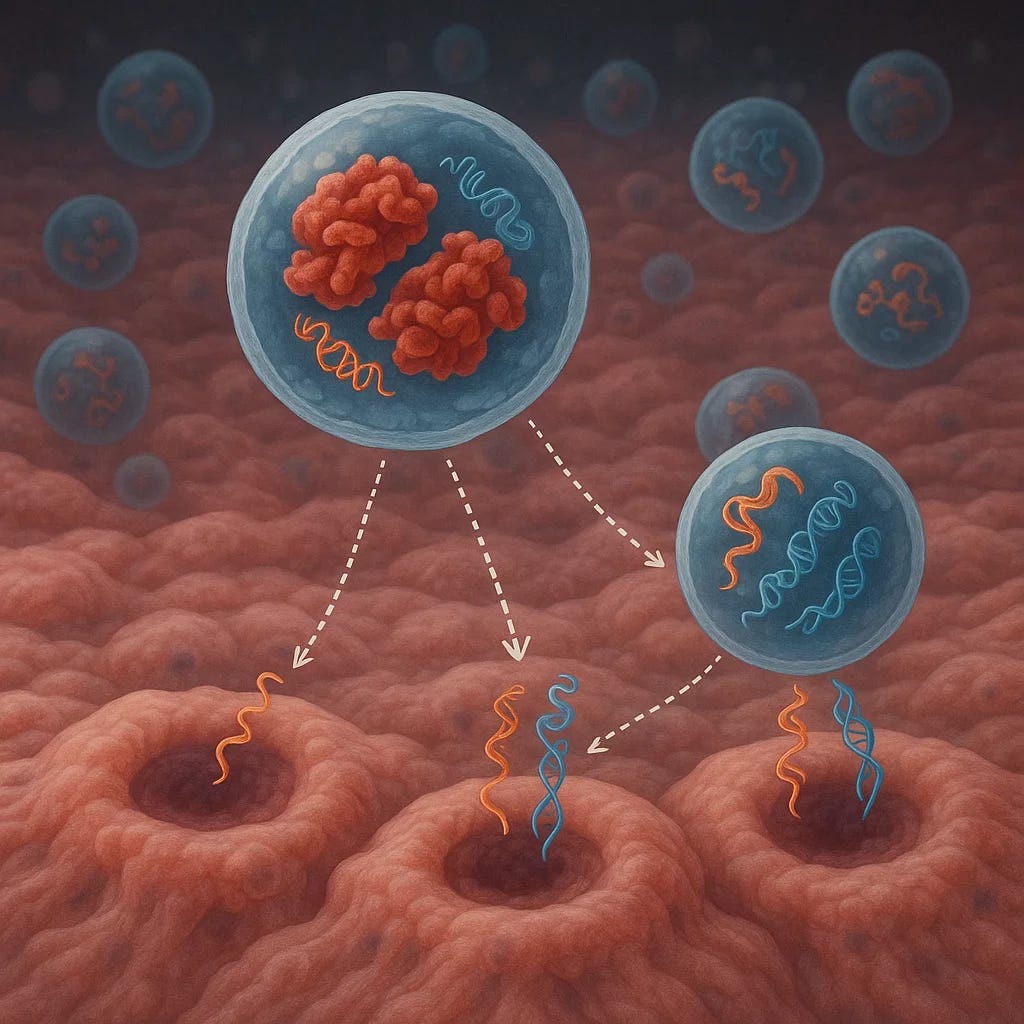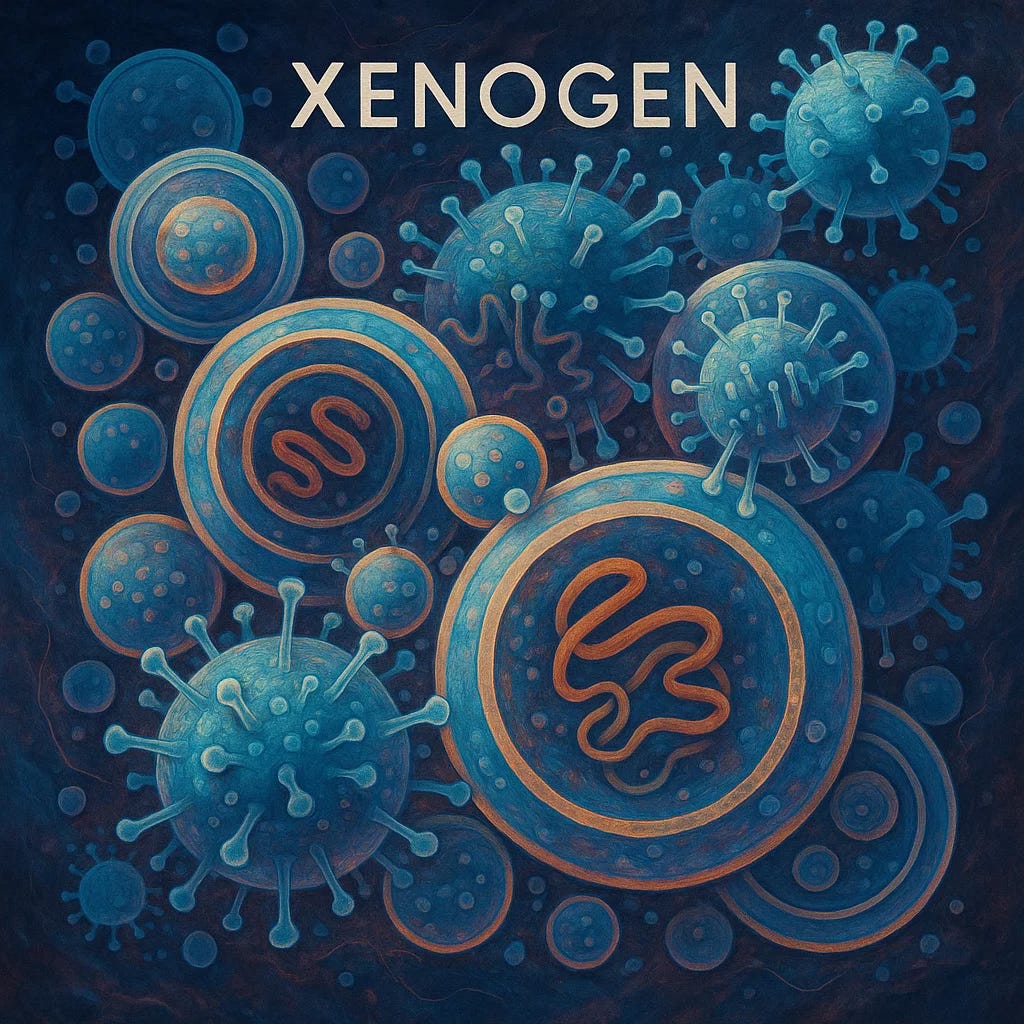Poisoned Not Infected: Reinterpreting Viral Disease through Chemical Toxicity
Bridging the Gap Between Chemical Toxicity and Viral Pathogenicity
Introduction
Building upon our previous exploration of viruses and exosomes, new insights challenge conventional paradigms of infectious disease. Neurotoxic pesticides such as rotenone and paraquat, historically associated with neurological diseases like Parkinson's disease and Amyotrophic Lateral Sclerosis (ALS), illustrate mechanisms strikingly similar to viral contagion.
Recent studies indicate these chemicals induce cells to release exosomes loaded with pathogenic proteins such as α-synuclein and TDP-43. These exosomes act similarly to viral particles, spreading pathology from cell to cell. For instance, rotenone prompts pathogenic α-synuclein accumulation in enteric neurons, releasing exosomes that are subsequently absorbed by sympathetic neurites, spreading Parkinson’s-like pathology.1
Chemical Exposures Trigger Exosome Release Mimicking Viral Particles
Exposure to environmental toxicants, including heavy metals, pesticides, and cigarette smoke, induces oxidative stress, prompting cells to release exosomes. These exosomes carry proteins and nucleic acids that influence recipient cells, thereby mimicking viral infections and facilitating intercellular communication similar to traditional viral pathways.2
Altered Exosomal Cargo Influences Recipient Cell Behavior
The composition of exosomes from chemically stressed cells significantly differs from those from unstressed cells. Under stress, exosomes contain specific mRNAs, miRNAs, and proteins such as misfolded proteins that aid recipient cells in coping with stress, demonstrating adaptive biological responses akin to immune modulation and stress resilience.2
Exosomes as Mediators of Stress Signals
Chemically induced exosomes act as conveyors of oxidative stress signals, carrying damage-associated molecular patterns (DAMPs) and stress signals to recipient cells. This transfer can trigger inflammatory responses or immune activation, influencing systemic physiological processes and potentially causing disease pathology traditionally attributed to viruses.3
Tylenol Toxicity and Viral Mimicry via Exosomes
Acetaminophen (Tylenol), a widely used analgesic, illustrates this vividly. Animal studies reveal acetaminophen-induced liver injury results in exosomes loaded with liver damage signals. Transferring these exosomes to healthy animals replicates pathological effects resembling viral infections, despite the recipient animals never directly encountering acetaminophen itself. This example strongly endorses the xenogen concept, suggesting chemical toxicity can masquerade as viral pathogenicity through exosome-mediated communication.4
Xenogen: Moving Beyond the Germ-Terrain Dichotomy
The xenogen explanation, which I previously explored as speculative, is increasingly supported by emerging research. To clarify, the term xenogen combines the Greek xenos, meaning "foreign" or "other," with the suffix -gen, derived from the established term "pathogen" (from Greek pathos, "suffering," and genēs, "producer"). Thus, rather than signifying new particles, "xenogen" intentionally builds upon and broadens existing conceptual frameworks—transforming the notion of something external causing suffering into a more expansive view that emphasizes informational roles within biological and ecological contexts.
Importantly, xenogens do not represent a newly identified particle type; rather, they encompass and transcend conventional distinctions between viruses and exosomes. Through the xenogen framework, I aim to move beyond simplistic "good" versus "bad" categorizations, highlighting their roles as carriers of vital information within living systems. While acknowledging their diverse functions, my perspective underscores that xenogens generally support biological order, resilience, and life—what can be described as centropy—even though they may sometimes be linked to pathology or disorder.
As I've previously stated:
"Viruses—or should we say xenogens—are vectors of resilience. Rather than pathogens invading from outside, they might actually represent the body's intelligent adaptation to environmental stress, communicating resilience factors within groups."
My work, extensively detailed in my book REGENERATE: Unlocking Your Body’s Radical Resilience through the New Biology, emphasizes exosomes as integral components of biological communication systems, underscoring their primary function as adaptive informational vectors rather than inherently harmful pathogens.
Historical Precedent: The Polio Narrative
Historical research into polio supports this understanding. Outbreak correlations with pesticide exposure rather than viral contagion suggest that both chemically-induced neurological damage and chemically induced exosomal release, both which may have mimicked viral pathogenicity, lead to historical misdiagnoses and misguided public health interventions.6
Implications for Health and Disease
Understanding exosomes as mediators of chemical stress reframes disease causation paradigms, highlighting environmental toxins rather than infectious pathogens alone. This perspective advocates for addressing environmental toxins—chemicals, heavy metals, electromagnetic radiation, and nutritional deficiencies—as primary preventive measures.
Conclusion
The recognition of xenogens and chemically induced exosomal pathways offers a potentially revolutionary perspective on disease, shifting the narrative from infectious fear to empowerment and interconnected resilience. Promoting environmental purity—clean air, water, nutritious food—and minimizing toxic exposures becomes central to genuine immunity and health.
References
Pan-Montojo, F., et al. "Progression of Parkinson's Disease Pathology is Reproduced by Intragastric Administration of Rotenone in Mice." PLoS One 5, no. 1 (2010): e8762.
Richardson, J.R., et al. "Exosomes as Mediators of Chemical-Induced Toxicity." Current Environmental Health Reports 6, no. 2 (2019): 152-159.
Harischandra, D.S., et al. "Manganese Promotes the Aggregation and Prion-like Cell-to-Cell Exosomal Transmission of Alpha-Synuclein." Science Signaling 12, no. 572 (2019).
Ji, Sayer. "Reframing Viral Mechanisms: Exosomes as Messengers of Resilience." Substack, accessed May 1, 2025, https://sayerji.substack.com/p/reframing-viral-mechanisms-exosomes.
Ji, Sayer. "The Xenogen Hypothesis: Why Viruses Are Vectors of Resilience." GreenMedInfo, accessed May 1, 2025, https://greenmedinfo.com.
Humphries, Suzanne, MD, and Roman Bystrianyk. Dissolving Illusions: Disease, Vaccines, and The Forgotten History. CreateSpace Independent Publishing Platform, 2013.







I like it. Whether you are correct in your theory, and their exists ample evidence to believe it so, or if you are only partially right, or even if you are completely wrong, which I doubt, the ancillary benefits of pursuing your theory will conclusively improve the health of our planet and its inhabitants. ( I’ve got to shorten my sentences)😊